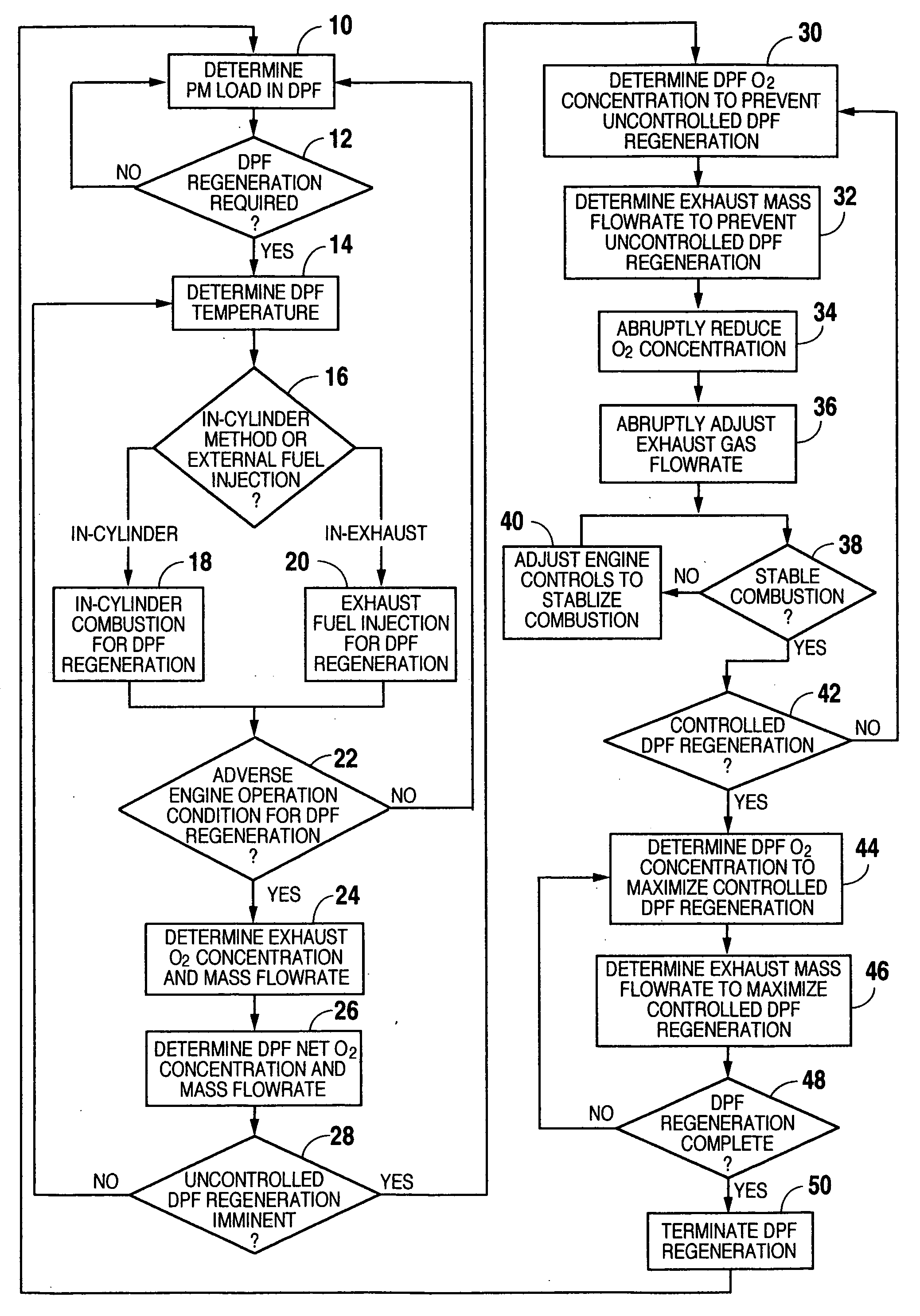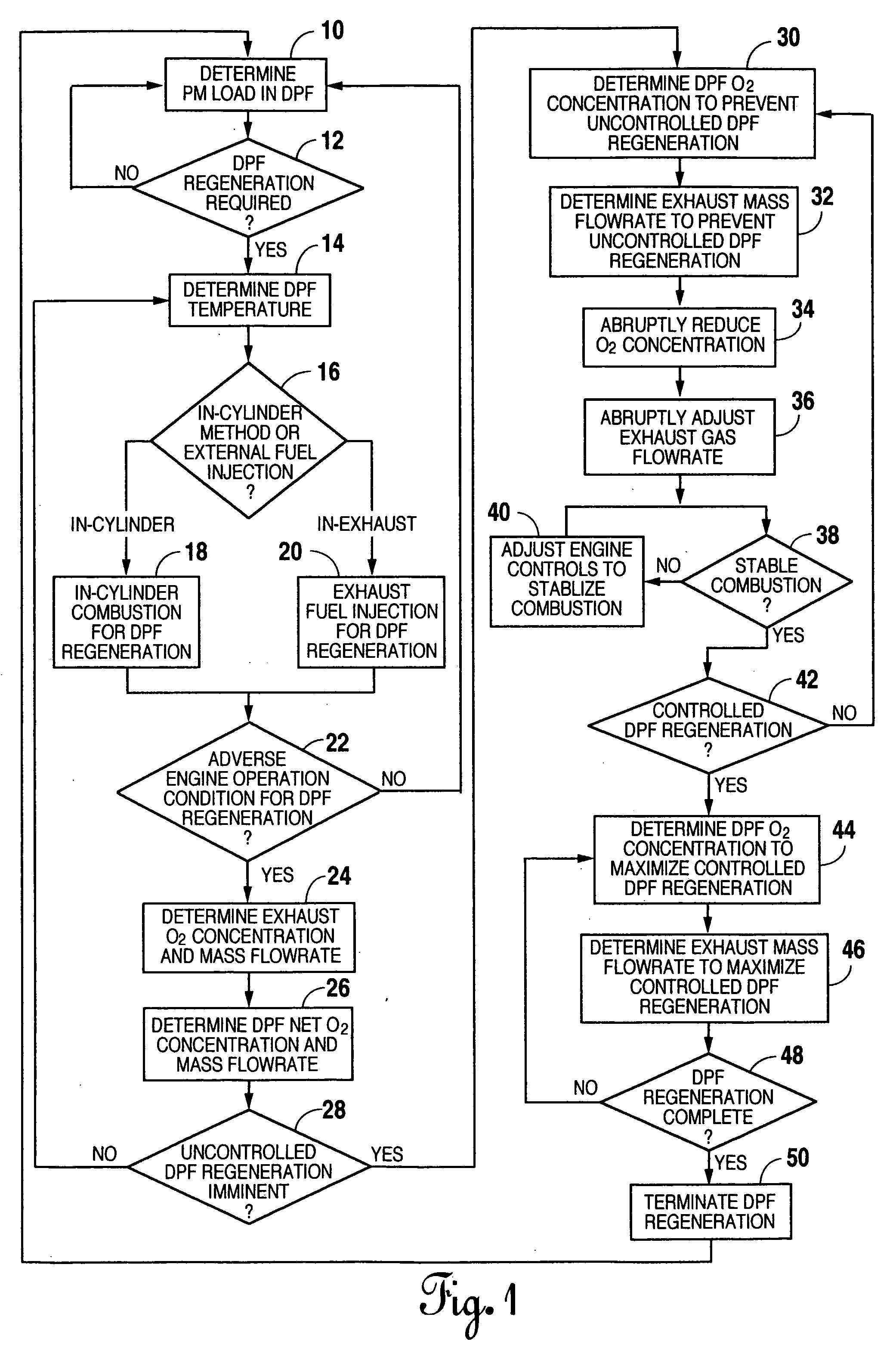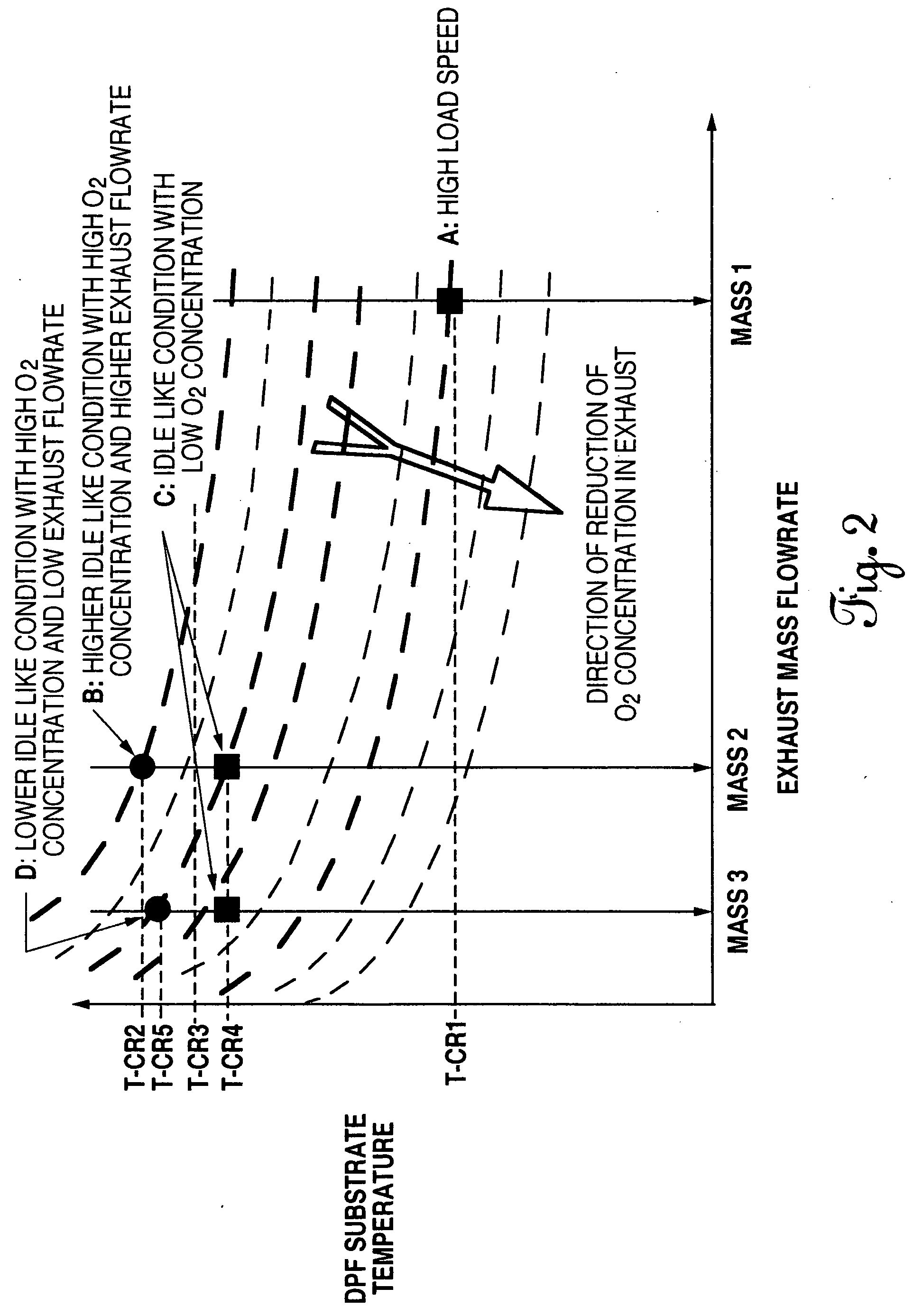Method for controlling temperature in a diesel particulate filter during regeneration
- Summary
- Abstract
- Description
- Claims
- Application Information
AI Technical Summary
Problems solved by technology
Method used
Image
Examples
Embodiment Construction
[0015] There are three major parameters that affect the chemical reaction rates during DPF regeneration: the amount of PM loaded in the DPF, temperature, and O2 and NO2 concentrations in the exhaust stream. During regeneration, the particulate matter build-up inside a DPF is oxidized by a reaction with oxygen. In accordance with the present invention, after DPF regeneration is initiated, the regeneration rate is controlled by controlling O2 concentration and exhaust flowrate. High O2 concentrations in the exhaust stream may cause uncontrolled regeneration under low exhaust flowrate conditions.
[0016] Under normal operating conditions, DPF traps particulate matter from the exhaust. As particulate matter accumulates in the DPF, the exhaust pressure at the DPF inlet increases causing a loss in combustion efficiency. Therefore, before the loss of efficiency becomes significant, the DPF should be regenerated or cleaned.
[0017] Diesel particulate filter regeneration can be initiated durin...
PUM
 Login to View More
Login to View More Abstract
Description
Claims
Application Information
 Login to View More
Login to View More - R&D
- Intellectual Property
- Life Sciences
- Materials
- Tech Scout
- Unparalleled Data Quality
- Higher Quality Content
- 60% Fewer Hallucinations
Browse by: Latest US Patents, China's latest patents, Technical Efficacy Thesaurus, Application Domain, Technology Topic, Popular Technical Reports.
© 2025 PatSnap. All rights reserved.Legal|Privacy policy|Modern Slavery Act Transparency Statement|Sitemap|About US| Contact US: help@patsnap.com



